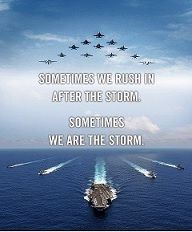Is this the beginning of a 'slippery slope' or just a needed restructuring?
A US Navy With Only 8 Carriers? | Defense News | defensenews.com
I would fear that once the precedent is set to cut the carrier force then the bottom will fall out of the box. I can also see the point that the US Navy has twice the carrier force of the rest of the world combined and in terms of capability 3-4 times that of the rest of the world.
I think I just really hate seeing some of most technically impressive and awe inspiring machines of the western world facing the knackery.
A US Navy With Only 8 Carriers? | Defense News | defensenews.com
I would fear that once the precedent is set to cut the carrier force then the bottom will fall out of the box. I can also see the point that the US Navy has twice the carrier force of the rest of the world combined and in terms of capability 3-4 times that of the rest of the world.
I think I just really hate seeing some of most technically impressive and awe inspiring machines of the western world facing the knackery.


Comment